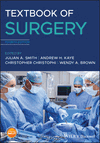Assessment of surgical risk
Summary
The definition of surgical risk is complex and differs depending on the point of view of the assessor and patient. Discussion of surgical risk should include the side effects, complications, failure of the procedure to achieve the desired outcome and the consequences of taking no action. Assessment of surgical risk is also complex but most surgeons rely on their experience as well as published literature of the associated risks of a surgical procedure along with both subjective and objective patient measures. There are a number of risk scoring systems that are available, including the American Society of Anesthesiologists (ASA) risk score, Acute Physiology And Chronic Health Evaluation (APACHE) system and Physiological and Operative Severity Score for the enumeration of Mortality and morbidity (POSSUM). In Australia the majority of patients in the public health system are evaluated in a hospital-specific pre-admission clinic where surgical risk can be assessed and medical conditions optimised prior to surgery. The commonest comorbidities increasing the risk of surgery are cardiac, respiratory and renal but age is also a significant risk factor, with the elderly having a two to five times greater risk of death in comparison to younger patients.



